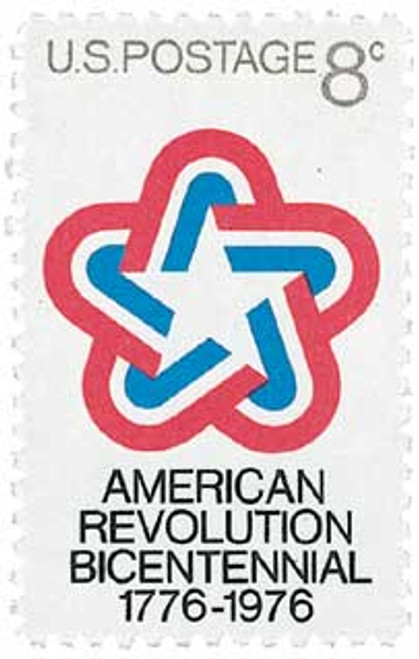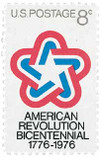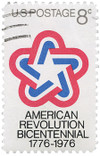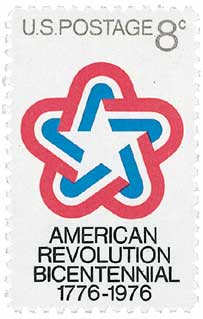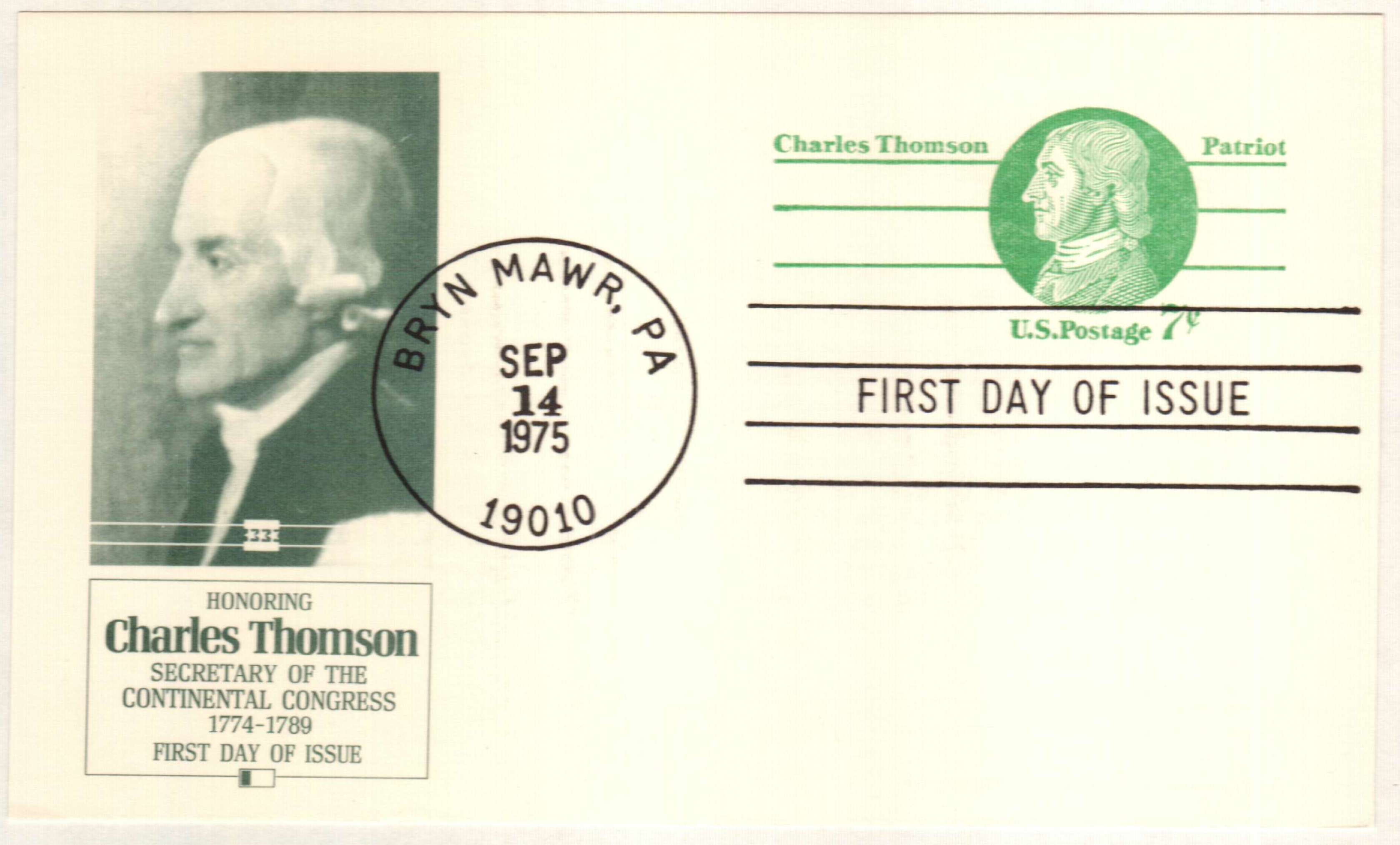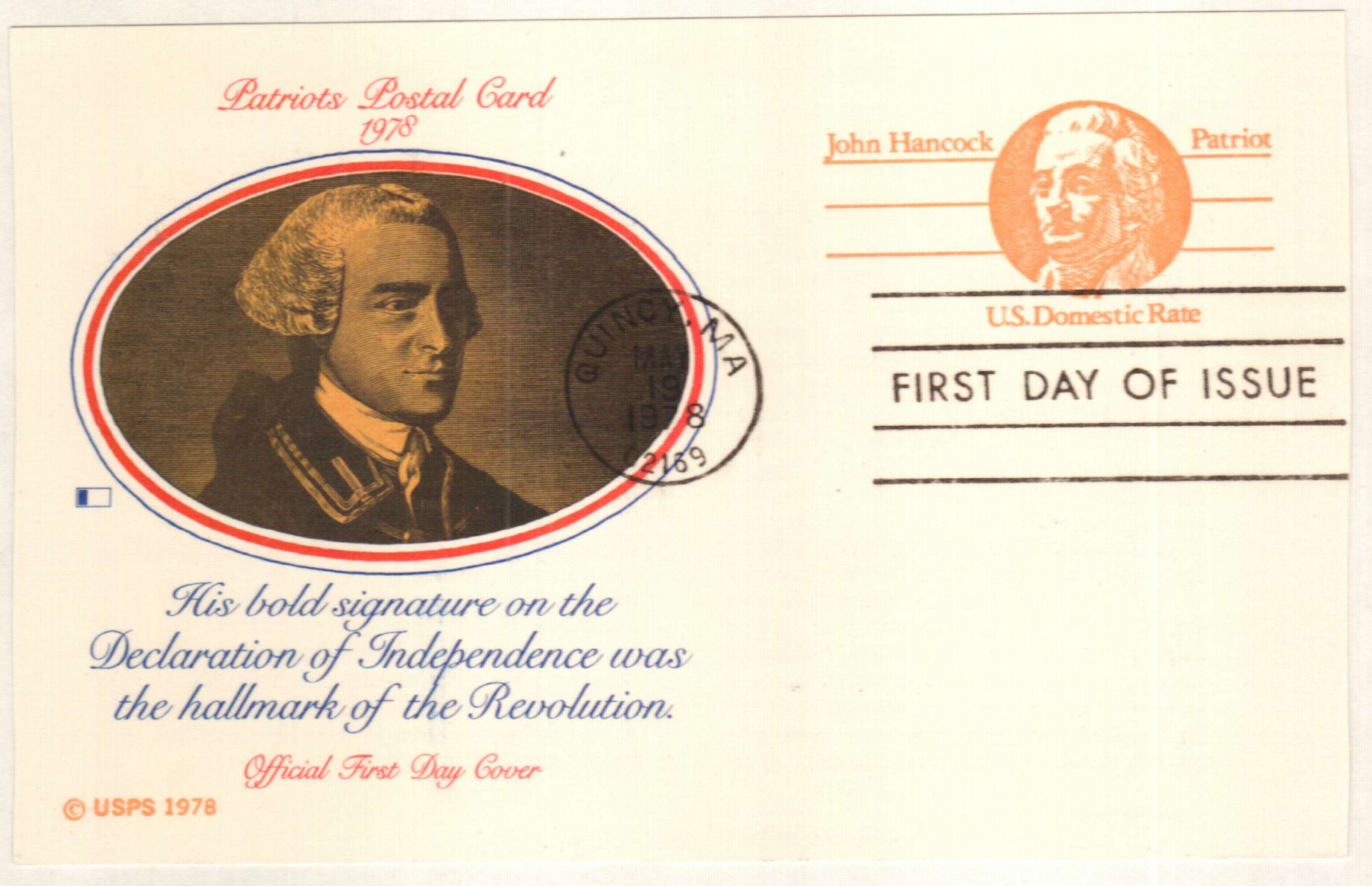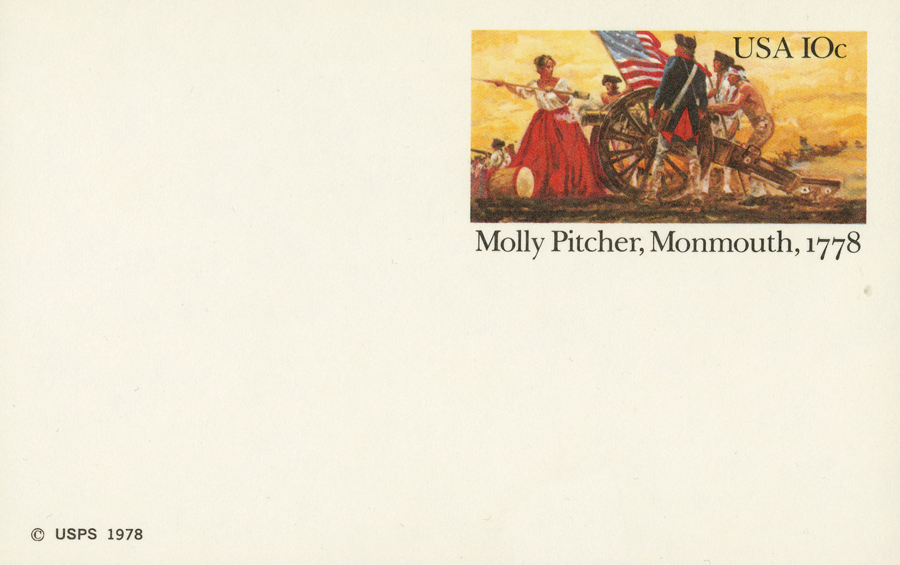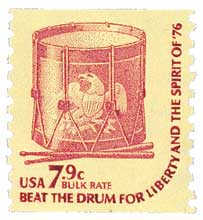
# 1432 - 1971 8c American Revolution Bicentennial
Start Of The Bicentennial Series
The U.S. Bicentennial was a series of celebrations during the mid-1970s that commemorated the historic events leading to America’s independence from Great Britain. Over the course of six years, the USPS issued 113 commemorative stamps honoring the bicentennial.
The first stamp in the series, #1432, featured the logo of the American Revolution Bicentennial Commission. Most of the stamps in the series would include this logo or the word “Bicentennial,” though not all of them.
Few stamps were issued as part of the series through 1974. Though each of those years there was an issue of a block of four stamps with topics including Colonial craftsmen, Colonial communications, the First Continental Congress, and the Boston Tea Party. Several of these stamps were also issued on July 4 of their respective years.
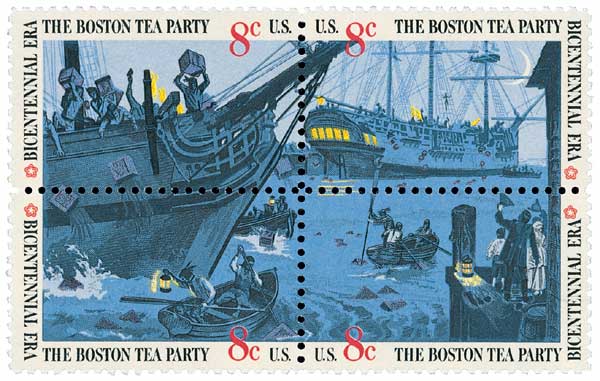
The series then began to expand rapidly in 1975, coinciding with the official events of the Bicentennial celebrations. The official events began on April 1, 1975, when the American Freedom Train departed Delaware to begin a 21-month, 25,338-mile tour of the 48 contiguous states. For more than a year, a wave of patriotism swept the nation as elaborate firework displays lit up skies across the U.S., an international fleet of tall-mast sailing ships gathered in New York City and Boston, and Queen Elizabeth made a state visit. The celebration culminated on July 4, 1976, with the 200th anniversary of the adoption of the Declaration of Independence.
Stamps issued during this period included the Contributors to the Cause and Military Uniforms. There were also stamps honoring notable battles such as Lexington and Concord, Bunker Hill, Saratoga, Princeton, Oriskany, and Yorktown. Plus other stamps featured the Articles of Confederation and the arrival of the Marquis de Lafayette.
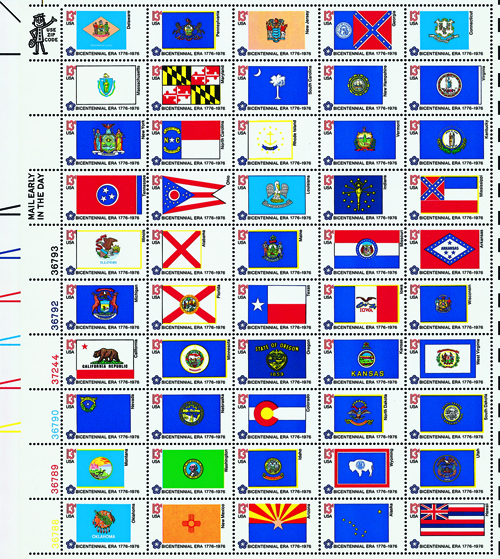
Among the most popular issues was the State Flag Bicentennial se-tenant issued in 1976. This was the very first time that all 50 stamps – each with a different design – were printed on a single sheet. The stamps are positioned on the sheet in the order in which each state joined the Union.
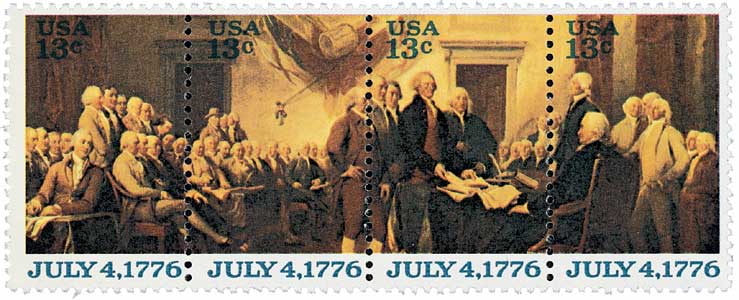
The USPS initially planned to issue another 50-stamp pane picturing the entire Declaration of Independence. However, they American Philatelic Society said there were already too many stamps being issued, so they went with a strip of four stamps instead.
Interest in the Bicentennial began to slow by 1978, though a few more stamps were issued honoring the French Alliance and John Paul Jones. The final stamp in the series, honoring the Treaty of Paris, was issued on September 2, 1983.
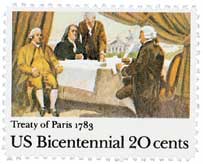
In addition to these commemoratives, there were also definitive stamps and postcards with Bicentennial themes, though they weren’t officially part of the series. See some of them below:
Click here to view all of the Bicentennial stamps.
Start Of The Bicentennial Series
The U.S. Bicentennial was a series of celebrations during the mid-1970s that commemorated the historic events leading to America’s independence from Great Britain. Over the course of six years, the USPS issued 113 commemorative stamps honoring the bicentennial.
The first stamp in the series, #1432, featured the logo of the American Revolution Bicentennial Commission. Most of the stamps in the series would include this logo or the word “Bicentennial,” though not all of them.
Few stamps were issued as part of the series through 1974. Though each of those years there was an issue of a block of four stamps with topics including Colonial craftsmen, Colonial communications, the First Continental Congress, and the Boston Tea Party. Several of these stamps were also issued on July 4 of their respective years.

The series then began to expand rapidly in 1975, coinciding with the official events of the Bicentennial celebrations. The official events began on April 1, 1975, when the American Freedom Train departed Delaware to begin a 21-month, 25,338-mile tour of the 48 contiguous states. For more than a year, a wave of patriotism swept the nation as elaborate firework displays lit up skies across the U.S., an international fleet of tall-mast sailing ships gathered in New York City and Boston, and Queen Elizabeth made a state visit. The celebration culminated on July 4, 1976, with the 200th anniversary of the adoption of the Declaration of Independence.
Stamps issued during this period included the Contributors to the Cause and Military Uniforms. There were also stamps honoring notable battles such as Lexington and Concord, Bunker Hill, Saratoga, Princeton, Oriskany, and Yorktown. Plus other stamps featured the Articles of Confederation and the arrival of the Marquis de Lafayette.

Among the most popular issues was the State Flag Bicentennial se-tenant issued in 1976. This was the very first time that all 50 stamps – each with a different design – were printed on a single sheet. The stamps are positioned on the sheet in the order in which each state joined the Union.

The USPS initially planned to issue another 50-stamp pane picturing the entire Declaration of Independence. However, they American Philatelic Society said there were already too many stamps being issued, so they went with a strip of four stamps instead.
Interest in the Bicentennial began to slow by 1978, though a few more stamps were issued honoring the French Alliance and John Paul Jones. The final stamp in the series, honoring the Treaty of Paris, was issued on September 2, 1983.

In addition to these commemoratives, there were also definitive stamps and postcards with Bicentennial themes, though they weren’t officially part of the series. See some of them below:
Click here to view all of the Bicentennial stamps.

